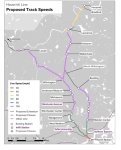Brattle Loop
Senior Member
- Joined
- Apr 28, 2020
- Messages
- 1,167
- Reaction score
- 2,084
Waaay back in the day, Washington DC did have trolley cars in its central area powered through an electrified underground rail. This was done because they didn't want the visual pollution of overhead wires around the significant national buildings and park areas,.
I'd forgotten about that, though I thought I remembered seeing somewhere that that setup had problems with either snow or leaves, I can't remember which. I know there's been a few instances with different methods for electrifying LRVs and trams without overhead lines, but if there's anything equivalent on the RR mode, I'm not aware of it.

